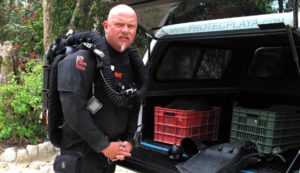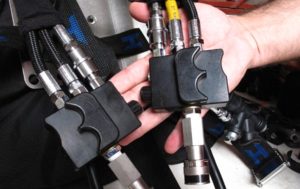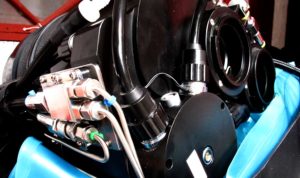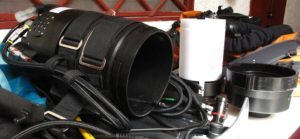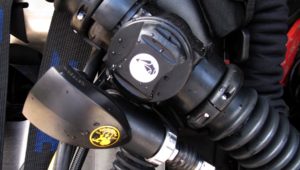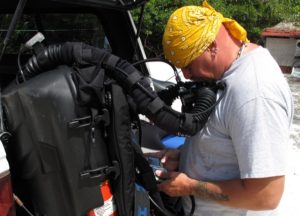Taking the CCR Sentinel cross over the opportunity arose in March of 2010 when Nader Quarta from Switzerland came to Mexico to do some fine cave diving in the Riviera Maya. When we were setting up his dive trip he mentioned that he was coming with his Sentinel CCR and I asked him if he is an Instructor on the unit. With a positive reply coming back I asked if he could do a cross over course with me while here and he was happy to do one for me while here in Playa del Carmen.
The Sentinel CCR is made in the U.K. and is the little brother from the larger Ouroboros CCR. The Sentinel has a manufacturer depth rating of 100 meters / 330 feet and a very unique Co2 sensor detecting a rise in Co2 in the breathing gas should the scrubber material fail. The Sentinel is designed as a back mounted counterlung Rebreather, meaning you have the front of your body clean and the counterlungs protected within the casing on your back.
Back mounted counterlung Rebreathers are used to be not breathing so well compared to front mounted counterlungs due to the harder work of breathing effort as the counterlungs are a bit shallower then your real lungs, making inhalation a bit more difficult then exhalation. During the last years a number of new Rebreathers with back mounted counterlungs came onto the market with quite good work of breathing besides being a back mounted counterlung design. Keeping the front clean protects the counterlungs in case you want to penetrate small caves or wrecks. For photography and filming it is quite nice too as it gives space to bring the camera close to your face. Smaller people with not so much real estate might find it very comfortable as they are not so cluttered with the counterlungs in front.
The Sentinel is a bit bulky compared to other Rebreathers but is packed within a rugged design package, large bore breathing hoses and meaty construction components. All parts are fitted together in a way they can be individually replaced at a reasonable cost. The unit looks it is made to last a life time. A nice feature of the Sentinel is the location of the manual oxygen and diluent injector buttons located left and right on the chest within switch blocks allowing the plug in of additional offboard gases.
The two day cross over program started off with the unit itself, learning how to pack the scrubber and work the electronics, which are very different from all others I have used so far in terms of going through an electronic checklist that will let you only dive when completed poperly. In the afternoon of the first day we went to cenote Eden to get through a nice and long confined water session where I had ample time to get used to the Sentinel and work my way through emergency scenarios such as the three H’s of Hypercapnia, Hyperoxia and Hyperoxia as well as a boom scenario, SCR bailout and various electronic features.
The second day we went to cenote Manati to complete the cross over program with two long dives where all emergency related drills and skills where repeated multiple times. When we started our diving that day the water was flowing quite strong out of the cenote through the tunnel and into the ocean. The current was so strong that we had to swim very hard against the water flow in order to get further into the open water area of the cenote.
I was very happy to be on a Rebreather as I had all the breathing gas in the world and was able to check out the work of breathing while swimming very hard for a longer period of time. At the beginning of the second dive I took the time to go through the complete handset menu various times. Very comprehensive, very sophisticated, very capable.
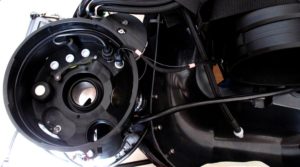
As Nad had asked me quite a view questions about the Classic KISS CCR we have in the store I packed my unit in the morning and took it with me to the dive site in order to give Nad an introduction on the Classic KISS CCR. The water current was still very strong, actually the strongest I have ever seen in 15 years. While I was on an open circuit single tank Nad was happily on the KISS CCR and off we went for another dive, this time me being the instructor and Nad being the student.
I had a great time with Nad to learn once more something new and meet new people. The cross over program was very thorough with Nad being very knowledgeable about Ouroboros and Sentinel CCRs.

